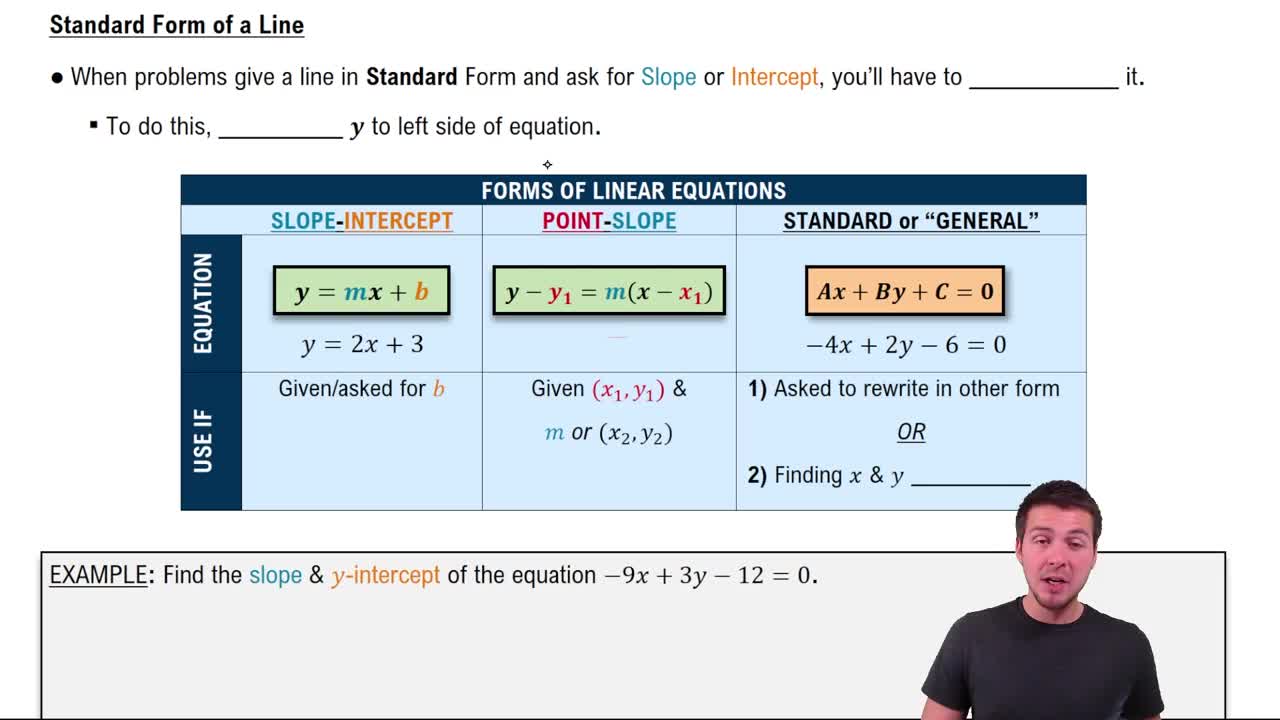Here are the essential concepts you must grasp in order to answer the question correctly.
Slope of a Line
The slope of a line represents the rate of change of the y-coordinate with respect to the x-coordinate. It is calculated as the rise over run, or the change in y divided by the change in x. In the context of a linear equation in standard form, the slope can be derived by rearranging the equation into slope-intercept form (y = mx + b), where m is the slope.
Recommended video:
Graphing Linear Equations
Graphing a linear equation involves plotting points that satisfy the equation on a coordinate plane. Once the slope and y-intercept are identified, one can start from the y-intercept and use the slope to find additional points. Connecting these points will yield a straight line, which visually represents the relationship defined by the equation.
Recommended video:
Categorizing Linear Equations
Standard Form of a Linear Equation
The standard form of a linear equation is expressed as Ax + By = C, where A, B, and C are constants, and A and B are not both zero. This form is useful for quickly identifying the x-intercept and y-intercept of the line. To find the slope from this form, one typically rearranges the equation into slope-intercept form.
Recommended video:
Standard Form of Line Equations
 Verified step by step guidance
Verified step by step guidance Verified video answer for a similar problem:
Verified video answer for a similar problem:

